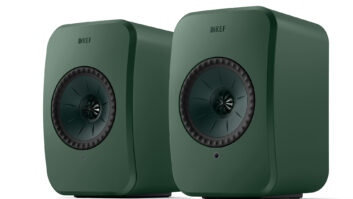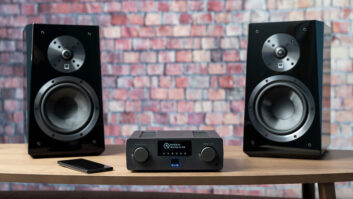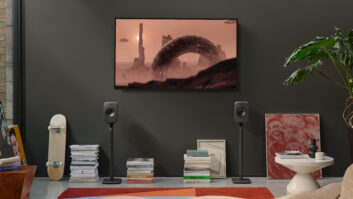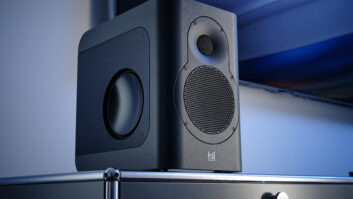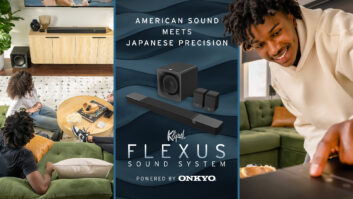The reason to make wireless a part of the systems that you install is obvious, or at least it used to be.
Wireless delivers the freedom to let clients roam around their house and property while maintaining a connection to the content stored locally on a home server or scattered computers, and it provides connection to any local services such as printers and storage. Of course, it also makes it possible to go anywhere within range to access Internet content or corporate servers. Not to be ignored, wireless also makes it possible to extend these capabilities to places where even the best installer cant run a wire, or to anywhere in the outdoor part of the property.
Once limited to more computer-like devices like the obvious laptop, PDA or desktop, wireless is now being increasingly employed to connect entertainment devices such as general purpose thin-client receivers, software-specific products such as Extender boxes for use with Microsoft Windows XP Media Center Edition, and with bridge type devices to bring high speed connectivity to a wide range of entertainment based products such as PlayStation2 and Xbox game consoles and TiVo Series 2 PVRs. Other wireless products gaining increased traction are security cameras a host of other products familiar in their tethered form, but no yearning to be set free of the wired yoke.
The media focus on all things wireless is great in that it raises the visibility for a technology that fits right in with the hardware/software/service/maintenance quartet offered by the knowledgeable custom installation business. However, dont push wireless off due to two popular myths. To those who say wireless is antithetical to the wire-based business we all grew up in, the answer is easy: Get with the times. Look at all of the devices and applications where wireless is something that your clients will ask for, if not need. Get wired, or youll be retired!
It may seem that wireless products are on sale just about everywhere but the carwash. Nonetheless, its far from a simple do-it-yourself project. If it were so easy, why would many of the big box retailers be offering home installation service for wireless networking? If they see a market for installation services, why shouldnt you? Why should you give that business over to someone else when youve already convinced the client to trust your company for the rest of a complex home entertainment and systems integration system?
So, what to do? Lets go to some basics and branch out from there.
First, with access to a homeowners plans before the job starts, you have the advantage of being able to access the demands. Consider range requirements vs. bandwidth needed. How many users will need to access the system at the same time? What will they be doing? Uploading work files to a corporate server? Downloading music? Sharing hardware resources? Monitoring a babys room or front gate?
Dont stop now; keep going with a wireless network assessment. What level of quality of service (QoS) is required. Can a packet be dropped every so often, or is 100 percent constant transfer essential? Is there a requirement to connect through the home network to a corporate server through some sort of VPN authentication? Or, looking at the broader security picture, just how secure does the wireless network need to be?
Keep going. Just how much coverage is needed? What type of construction features are there in the residence that might work against the normal range figures for the type of wireless products that you plan to use? What other products operate in the wireless service that you are creating that compete for bandwidth in the 2.4 GHz or 5GHz bands where the wireless products operate? Are there any devices that will use wireless that cannot be programmed with product-specific software drivers? (Think video games, printers, TiVo PVRs and so forth.)
Finally, ask the client if there are any corporate computers or legacy adapters that also need to access the home network. They may be fine for their intended application, but what accommodations are needed to make sure that they work at home and on the road. Look at these questions, which in some cases are only the tip of the iceberg, and the answer to why you need to get involved with, and know about wireless should be obvious.
Taking those standards first, 802.11b is the baseline, with pricing that has dropped so dramatically in the past few years that it is almost ubiquitous. Limited to 11 MB/s, but balancing that out with a range of up to 100 meters in optimal conditions, b is now found everywhere from your home to the town square, from hotels to airport lounges, from Starbucks to McDonalds. And, of course, it started in the corporate, or enterprise world, but to some extent the popularity of the original 802.11b standard and the ease with which it can be hacked has led security conscious IS executives to look to more secure ways to allow corporate data to be let loose in the ethers.
You cant go wrong with offering 802.11b to clients; indeed you more or less have to. It is necessary so that any portable gear they have is able to connect to the many HotSpots just listed. It is needed because it is the lowest common denominator, and even when dealing with new products such as Series II TiVo systems or video game consoles, the newer b/a/g driverless wireless bridge products may not yet be compatible with the hardware that you want to mate them up to.
For those who claim that the b format doesnt have enough bandwidth and operates in a congested frequency band, there is 802.11a, which offers the promise of up to 54MBs throughput, but that comes at the price of shorter range. However, the lack of congestion, which translates to less interference, has made a the choice of some entertainment-oriented products. That, in turn, means that you may need to specify it for streaming media, but not other data applications.
Another answer to the need for speed comes in the form of the 802.11g format, which uses the same frequency band as b devices, but a different modulation scheme (among other things) to deliver the same 54MBs throughput as a. The advantage, however, is that all g access points also talk to b devices, albeit at reduced speed. Want to be on the safe side? There are products that run the hat trick by accommodating all three standards. Some, such as Netgears WGU 624, offer proprietary standards that claim to offer up to 108 MBs through both the a and g transmission paths.
Heres where the letters really begin to confuse people, and it is up to you to demystify things for clients even as you figure out what is right for them. Systems such as Super G actually start with the chip vendors whose products then offer higher speed. The problem is that some of these turbo speed systems work only with like products, while others are more broadly compatible, but at the expense of true high speed.
Ready for some more letters? For those installations that demand the most secure wireless communications without resorting to expensive (and often proprietary) enterprise strength schemes, the new WPA2 technology, based on the 802.11i standard, offers the comfort that your data will be safe from all but the most determined hackers. When security is a concern, the original WEP standard is now considered too vulnerable, so look for WPA or WPA2 products.
Integrating these more secure products is also where you can earn your stripes with demanding customers. Lets say that you put in a WPA2 system to protect the family financial data, but Junior wants to be able to take the Xbox downstairs to the theater or hook-up the PS2 console with a network adapter that a friend brought over. How do you serve the needs of a wireless network that has WPA2, when most of the driverless bridges available are not WPA certified? One answer is a dual network. Another is careful selection of bridge products. Finally, though antithetical to the theme of this article, the other answer may be to include HomePlug in the system, so that Junior can simply plug the adapter into any AC outlet in the house when needed and connect the standard jumper wire to the game without having to tamper with the wireless at all.
A common problem will be the issue of what to do when the signal is down to an area where connections become problematic, particularly at the high speed required for video streaming and more complex or multiple stream applications. The novice, or the consumer, might seek obvious products off the shelf at the local retailer, but that wont always do the trick.
That thought might lead them to a repeater, and in some cases this solution might work. However, you need to know better. Most importantly, the majority of repeater products are brand specific, requiring that the repeater and the access point be from the same manufacturer. Sometimes you can do that, sometimes you cant. Even when everything is compatible enough to talk together, using repeaters, as opposed to planning for additional access points fed by the wired backbone, may have a significant impact on the system speed/throughput. The moral is to plan ahead with AC power and backbone drops at the edges of the signal radius to extend coverage.
Within the powered category of range-extension products, differentiate between repeaters, which are placed at the edge of the signal coverage area and products signal boosters that are basically amplifiers. The amplifiers, which may be brand specific or general purpose, connect directly to the back of the access point. By boosting the signal output and then using a high-gain antenna, as described below, you really punch up the signal range.
As always, there is a caveat when taking this approach. When you boost the power and use an omni-directional antenna, you get the benefit of increased range on your clients property, but the surrounding neighborhood benefits, as well. Combat that possibility either through intelligent antenna placement or the use of more secure transmission such as WPA/WPA2.
What about those antennas? There are a number of approaches that you can take. It sounds too obvious and simple, but when the signal gets weak do what you would for any RF system: go for more gain at the receive end, the transmit end or both. The low-gain rubber ducky type of antennae common to many access points may be replaced with higher gain models. You can move, literally, from there to an extension stand that not only allows the use of a higher gain antenna, but which also allows you to move the antenna to a more desirable location than being stuck on the back of the access point. That not only gives you the chance at a better propagation pattern, it also lets the antenna be mounted where it needs to be while the access point is where it wants to live: close to AC power and the network backbone.
Once you really get into the area of antennae, a world far from the knowledge base of most consumers, you have all sorts of options. Beyond simple screw-on whip replacements, there are both directional and omni-directional high-gain antenna products, as well as special corner mount and outdoor products that can be used to extend signal range. Make yourself the expert on this part of wireless technology and you will find client doors open along with the signal range.
In many respects, designing wireless systems can become as much of an art as it is a science. After all, the list of variables that opened this article can each, in their own way, impact the type of components you will want to use and where you place them. Add to that the fact that some of the many variables are simply outside of your controlthe number of users and what their system demands are, the design of the residence and the construction materials used against the range requirements, the need for security (or not) and more. Sometimes you will find that what serves one master is detrimental to the needs of the technology or technique required to deliver signal to another user.
Michael Heiss ([email protected]) is a technology and marketing consultant based in Los Angeles.
